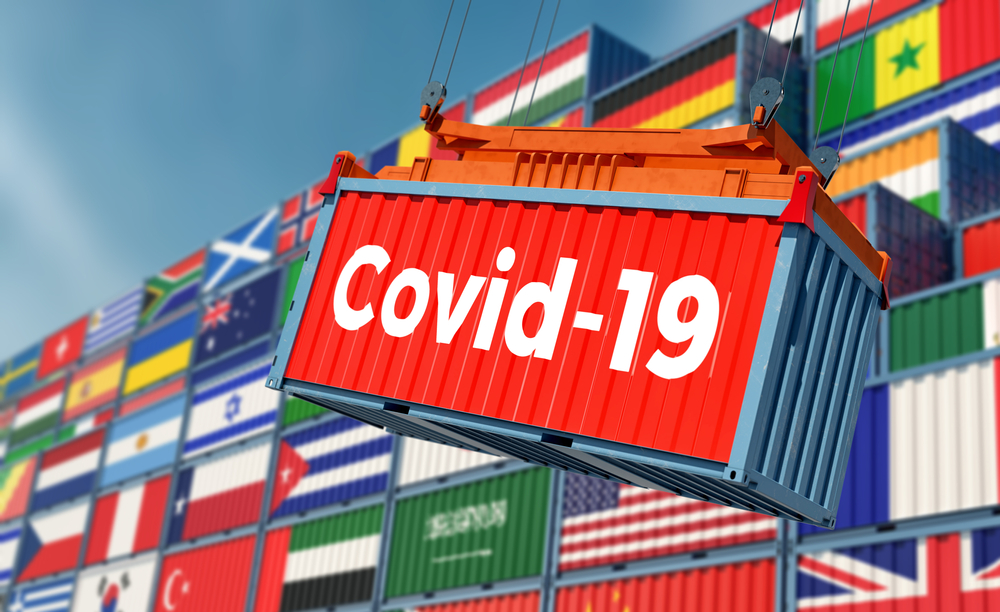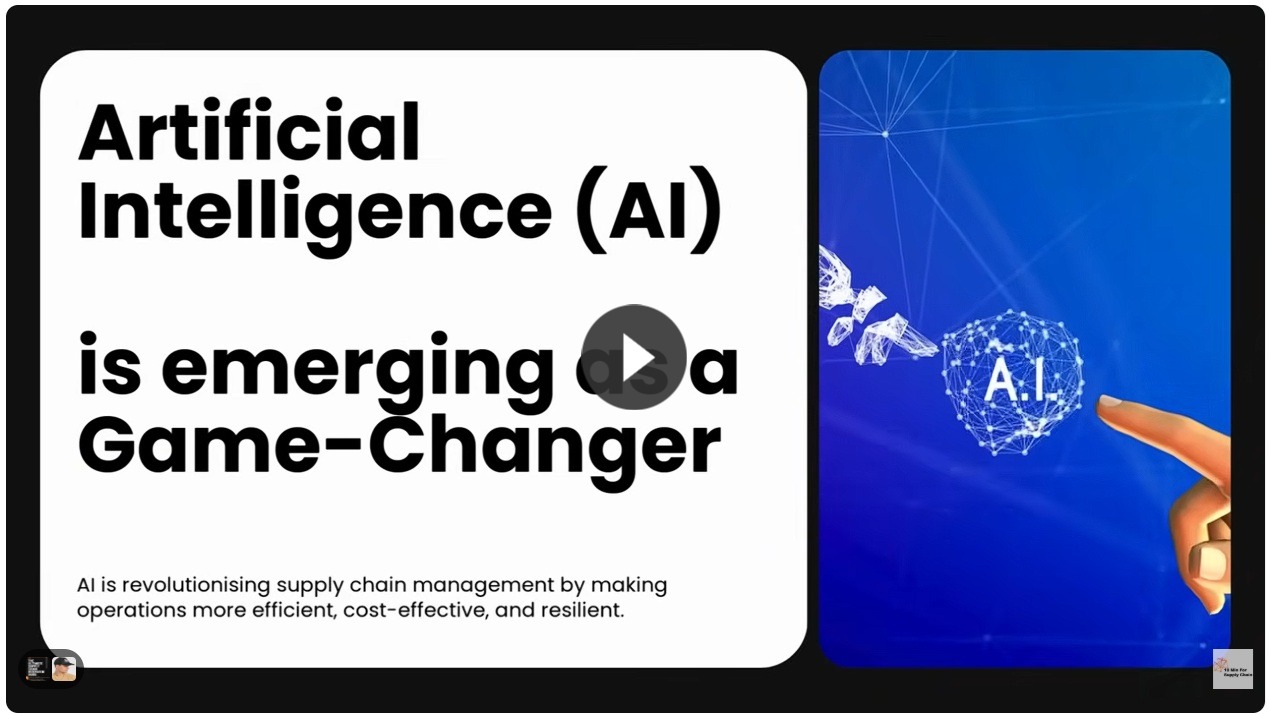Improve Your Supply Chain with AI

Climate change, geopolitical tensions, and labor disruptions continue to strain global supply chains, prompting manufacturers to seek more effective solutions. In 2025, advanced technologies such as artificial intelligence (AI) are poised to sharpen forecasting, strengthen resilience, and streamline operations. Efforts to improve visibility showcase how rapidly evolving tools can reshape supply chain management for a more transparent and agile future.
Tariff volatility has dampened demand across the sector, with the Institute for Supply Management’s latest index marking a seventh straight month of contraction. Export pressures and shrinking order books are forcing firms to adapt, accelerating the search for manufacturing solutions that can steady operations and counteract the drag of trade uncertainty.
As tariff pressures push costs higher, manufacturers are doubling down on efficiency, turning to automation and increasingly sophisticated AI. Many firms are moving beyond generative tools toward agentic systems that can take actions autonomously, a shift gaining momentum amid wider economic uncertainty.
A 2025 CEO Outlook survey by Klynveld Peat Marwick Goerdeler (KPMG) found that leaders are prioritizing supply-chain resilience and digital upgrades. Notably, 63% of manufacturing chiefs stated that ongoing disruptions are limiting their ability to innovate, yet 68% still ranked AI as a leading investment focus.
Other threats to the supply chain include:
- Geopolitics
Governments are under strain, juggling fierce economic competition, volatile political shifts, and rising tensions at home and abroad. The global landscape grew more fragmented as nations chased economic value while navigating weakened alliances and mounting geopolitical risk.
- Climate crisis
Extreme weather, from deepening droughts to destructive floods, is upending supply routes and exposing the fragility of global logistics. At the same time, armed conflicts and expanding sanctions are redrawing trade patterns, while political volatility in the US is complicating efforts by governments to set stable, long-term policy direction.
- Restrictive trade regulations
Rather than fostering cooperation, global crises are widening divides between nations. Policies that favor domestic industries and trade restrictions, particularly by the US and China, are heightening geopolitical friction and altering the flow of global commerce. Meanwhile, the race for supremacy in manufacturing technologies and industries in areas like AI and defense is compounding uncertainty across the international stage.
- Prolonged inflation
Governments are grappling with sustained inflation and slow economic growth while managing the lingering fiscal impact of COVID-19 stimulus programs. Mounting public debt limits their capacity to invest in sustainability initiatives or help emerging markets adapt to climate change, constraining global efforts to build a more resilient and green economy.
(Also read: The Role of AI in Foreign Policy: Strengths & Setbacks)
10 Ways AI strengthens supply chains
Supply chain leaders face ongoing tests of ingenuity and resilience, but lessons from the past offer guidance. Global logistics networks must evolve to become more resilient, sustainable, and future-ready, ensuring the stability of the nations and alliances that rely on them. AI is emerging as a critical tool in this transformation.
- Accelerated planning
Global manufacturing benefits from fast, rules-based planning that streamlines decisions across multiple distribution centers. By quickly narrowing options and balancing constraints, companies can generate rough-cut plans that optimization tools later refine, improving operational efficiency and responsiveness.
- Optimal solutions
In complex manufacturing markets’ supply chains, optimization balances constraints to recommend the best trade-offs. Rather than replacing rules-based planning, AI complements it, enabling rapid, data-driven decisions that maximize efficiency and business outcomes.
- Predictive analysis
AI and machine learning enhance supply chains by forecasting demand and sensing market shifts. By analyzing real-time data, these tools enable adaptive decisions, improving accuracy in replenishment, logistics, and root cause analysis.
- Automated oversight
Generative and autonomous AI are transforming supply chains by enabling independent problem-solving, personalized solutions, and proactive decision-making. From LLM-powered assistants to agentic AI, these technologies streamline operations, enhance learning, and help planners anticipate disruptions with minimal human intervention.
- Improved procurement
Unlocking value in procurement, AI streamlines contract design and management while preventing value leakage. By ensuring agreements are executed efficiently and aligned with intended outcomes, AI helps organizations capture full contract potential, safeguarding revenue.
- Cost efficiency
Manufacturers are turning to AI to sharpen financial planning, forecasting, and production efficiency. By harnessing data for margin analytics, stock-keeping unit (SKU) rationalization, and optimized logistics, AI drives cost savings and boosts profitability.
- Better financial management
In industrial manufacturing, market sensing and scenario planning that factor in trends, macroeconomic shifts, and disruptions help align supply chain strategies with corporate goals. This integrated approach enhances working capital management and strengthens cash flow.
- Scaling flexibility
Firms can achieve efficient growth by leveraging dynamic predictive forecasting and digital twins, virtual AI models that simulate operations. This approach enhances inventory management, drives innovation, supports sustainable expansion, and strengthens competitiveness across markets.
- Risk management
AI strengthens supply chain resilience by simulating production and forecasting delays, vulnerabilities, and environmental, social, and governance (ESG) risks. By integrating social indicators, companies can anticipate disruptions and maintain continuity in complex industrial landscapes.
- Workforce efficiency
Automating repetitive, rules-based tasks such as procurement and order fulfillment enhances workforce efficiency, reduces errors, and speeds up operations. By freeing employees to focus on strategic initiatives, companies increase productivity, engagement, and retention while streamlining workflows across the organization.
(Also read: What the Supply Chain Looks Like This 2025)

Embracing AI for Resilient Supply Chains
AI holds transformative potential for supply chains, offering businesses of all sizes the ability to enhance efficiency, anticipate risks, and drive strategic growth. Yet, implementing enterprise AI is complex, and supply chain leaders often require guidance to identify the most effective integration strategies. Despite these challenges, AI has moved beyond a fleeting trend, emerging as a core component of competitive supply chain management.
Across the global economy, AI continues to stand out as a driver of innovation, boosting tech exports and improving operational efficiency. At the same time, automation is reshaping labor markets, creating new roles while displacing others, with impacts that vary by sector and region. Regulatory frameworks have struggled to keep pace, leaving societal concerns largely unaddressed.
In a world marked by geopolitical tension, climate volatility, and uneven technological advancement, supply chain resilience is no longer optional. Companies and nations must rethink growth strategies, leverage AI thoughtfully, and build adaptive, future-ready operations to maintain competitiveness and navigate an increasingly unpredictable global landscape.
As one of the Top 20 EMS companies in the world, IMI has over 40 years of experience in providing electronics manufacturing and technology solutions.
We are ready to support your business on a global scale.
Our proven technical expertise, worldwide reach, and vast experience in high-growth and emerging markets make us the ideal global manufacturing solutions partner.
Let's work together to build our future today.
Other Blog




